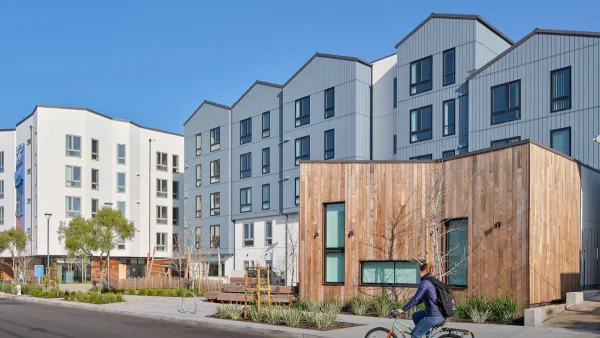Next American City reviews a new book called Traffic: Why We Drive the Way We Do (and What it Says about Us) by journalist Tom Vanderbilt, which follows in the footsteps of Freakonomics and Blink.
"Touching on neuroscience, psychology, economics and urban planning, Vanderbilt leads us through a series of case studies that gently inform us, despite what we know in our hearts, that we are not all traffic experts. He takes us to the Los Angeles traffic control center on Oscar night, uses the lines at Disneyland's Space Mountain to explain the pros and cons of congestion pricing and introduces us to a Stanford University team that has discovered how difficult it is to program a robot to drive a car.
Programming humans to drive is nearly as difficult, it turns out, as the act of driving is fraught with optical and neurological blind spots. The speed of our vehicles has outpaced the speed of evolution, such that our brains and eyes, accustomed to traveling at much slower speeds, deceive us repeatedly. One study cited by Vanderbilt found that at 30 mph drivers are presented with roughly 1,320 pieces of information a minute - and we have a distinct fondness for misinterpreting them. We have trouble gauging the speed of an oncoming car at a distance, for example, and in a phenomenon known as "inattentional blindness," we tend to overlook the objects we don't expect to see - the very objects that pose the most danger. In ways large and small, we misjudge risk."
FULL STORY: Traffic: Why We Drive the Way We Do

Planetizen Federal Action Tracker
A weekly monitor of how Trump’s orders and actions are impacting planners and planning in America.

San Francisco's School District Spent $105M To Build Affordable Housing for Teachers — And That's Just the Beginning
SFUSD joins a growing list of school districts using their land holdings to address housing affordability challenges faced by their own employees.

The Tiny, Adorable $7,000 Car Turning Japan Onto EVs
The single seat Mibot charges from a regular plug as quickly as an iPad, and is about half the price of an average EV.

Seattle's Plan for Adopting Driverless Cars
Equity, safety, accessibility and affordability are front of mind as the city prepares for robotaxis and other autonomous vehicles.

As Trump Phases Out FEMA, Is It Time to Flee the Floodplains?
With less federal funding available for disaster relief efforts, the need to relocate at-risk communities is more urgent than ever.

With Protected Lanes, 460% More People Commute by Bike
For those needing more ammo, more data proving what we already knew is here.
Urban Design for Planners 1: Software Tools
This six-course series explores essential urban design concepts using open source software and equips planners with the tools they need to participate fully in the urban design process.
Planning for Universal Design
Learn the tools for implementing Universal Design in planning regulations.
Smith Gee Studio
City of Charlotte
City of Camden Redevelopment Agency
City of Astoria
Transportation Research & Education Center (TREC) at Portland State University
US High Speed Rail Association
City of Camden Redevelopment Agency
Municipality of Princeton (NJ)





























